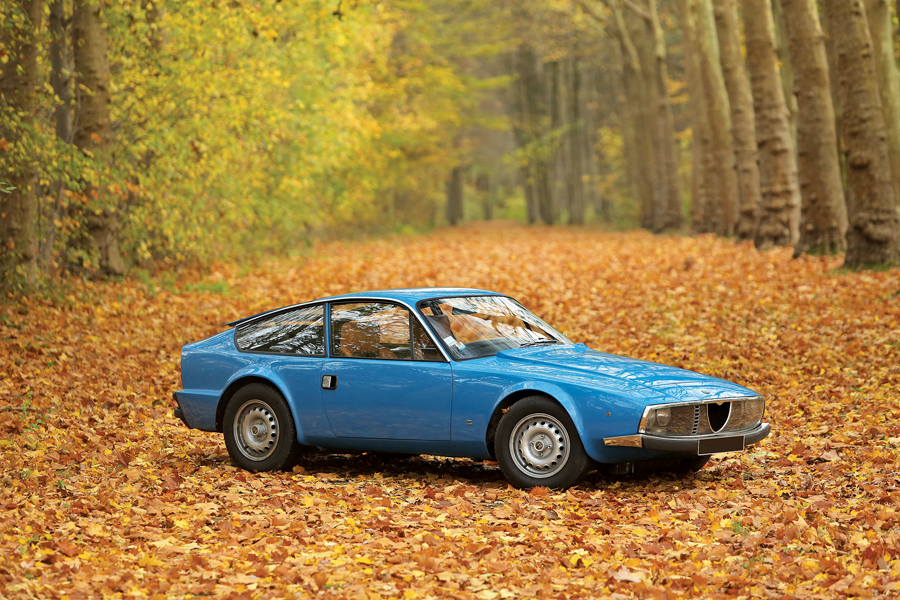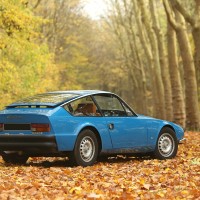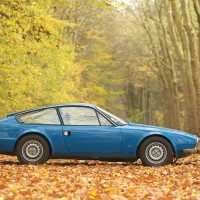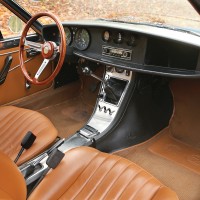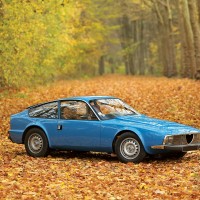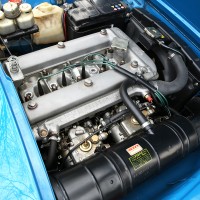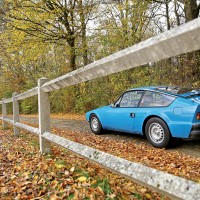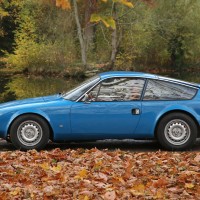SCM Analysis
Detailing
| Vehicle: | 1972 Alfa Romeo 1600 Junior Zagato |
| Number Produced: | 402 |
| Original List Price: | Median to date, $33,300; high sale, $80,799 (this car) |
| Tune Up Cost: | $375 |
| Chassis Number Location: | Engine bulkhead, on plate and stamped into body |
| Engine Number Location: | Intake side of block |
| Club Info: | Alfa Romeo Owners Club |
| Website: | http://www.aroc-usa.org |
| Alternatives: | 1972 Lancia Fulvia Sport, 1972 Porsche 911T, 1972 Renault Alpine A110 |
| Investment Grade: | B |
This car, Lot 120, sold for $82,787, including buyer’s premium, at the Artcurial Rétromobile sale in Paris, FRA, on February 5, 2016.
Offered at no reserve, this rare Alfa achieved a price over twice the median listed in the new-format SCM Pocket Price Guide and sold for 25% more than the previously recorded auction high sale. Does this mean the Zagato-bodied version of the Alfa GTV is on a price tear?
The answer is yes, but this sale doesn’t represent a market-leading result.
What this transaction reflects are two realities of today’s market:
First, concentration on the visible public auction market can be a problem when placing the sale of a rarely traded car into context.
Second, the market trend of specificity is marching on.
Looking from the broadest view and working our way in, as always, we begin with basic attributes of value.
Limited-production Zagatos on the rise
Special-bodied, limited production variants of cars with well-known and well-regarded mechanicals have been the focus of increased enthusiast collector interest in the past five years.
Among those cars, the output of Carrozzeria Zagato has been among the most desired, with an accompanying rise in values. On the other hand, the most-prized Zagato cars are those designed and built for competition. Like its older sister, the 2600 Sprint Zagato, the Junior Z was conceived as a stylish touring car rather than as a racer.
By the time the Junior Z was built, Zagato was running an actual factory. It was no longer a tiny artisanal workshop, but a home for the production of serious numbers of cars using pressed-steel body panels. The number of cars built was certainly much smaller than the tens to hundreds of thousands turned out in the main factories, but these were not hand-hammered aluminum jewels.
Alongside the line for the Alfa was that for the Lancia Fulvia Sport. A total 1,108 of the 1300 Junior Z were made from 1968 through 1972, with 402 of the 1600 from 1972 to 1975. This compares to just under 7,000 of all versions of the Fulvia Sport, in 1,200-cc, 1,300-cc and 1,600-cc variants. Why the disparity?
The styling of the Junior Z is, in my opinion, quite wonderful. It is a late-1960s design that looks forward to the angular style that defined the 1970s. Simple, elemental and reduced to essentials, the car reflects the best in what Zagato had to visually offer. But it also has a certain plainness that is more acceptable in a competition car than a GT tourer. As it wasn’t actually a car to race, it can tend to simply look cheap. The materials Alfa used in the interior in particular are not terribly special — especially when compared to the standard Bertone GTV.
The pre-Fiat Fulvia Sport was heads and shoulders more refined in design detail and materials than the Junior Z. That is certainly evident in the Series 1 cars from 1965 to 1967, which have much more detail and finer materials.
It can be argued that the Alfa became a more interesting car to drive and better detailed as it aged, and the opposite can be said for the Lancia as Fiat’s hand took hold after 1969. Nevertheless, the Lancia handily outsold the Alfa at all times in its life — and for a reason.
A great driver and easy to repair
The next attributes of value to consider are historic importance, usability and ease of ownership. Historically, the Junior Z takes its place in the long line of Zagato Alfa Romeos, with little apology despite its lack of competition history.
As with the GTV on which it is based, the Junior Z is entertaining to drive, roomy considering its diminutive dimensions and has sufficient luggage capacity to be a great weekender.
As the mechanicals are identical to those found in the Giulia coupes, spiders and sedans, they are easy to deal with. Body panels and some trim parts are a very different story, however. Junior Z-specific body parts are expensive — when you can find them.
Sold at a market-correct price
As is sometimes the case with rare cars such as the Junior Z, market availability varies greatly. At times a potential buyer has six or seven from which to choose; at others, none can be found at all.
In most cases, as none were officially imported to the United States, it’s more likely that any that are available will be found in Europe. In October 2015, I was in Italy and engaged in an active search for a 1300 or 1600 Junior Z. I located four examples, two of each type.
One of the 1600s was a yellow one-owner car that had been off the road for seven years and needed, in addition to recommissioning, a bit of minor bodywork. The second was a silver car that had been restored in 2012 and very well maintained since.
The asking on the former was approximately $56,000, the latter $72,000. In overall description, our subject car seems to be similar to the silver car, and given the 16% buyer’s commission, sold for about that asking price.
Given the current market’s distinction between cars ready to use and those requiring work, the price paid here is exactly in line with the private-sale market. Sold and bought right on the money for a car that hopefully has no needs. ♦
(Introductory description courtesy of Artcurial.)
